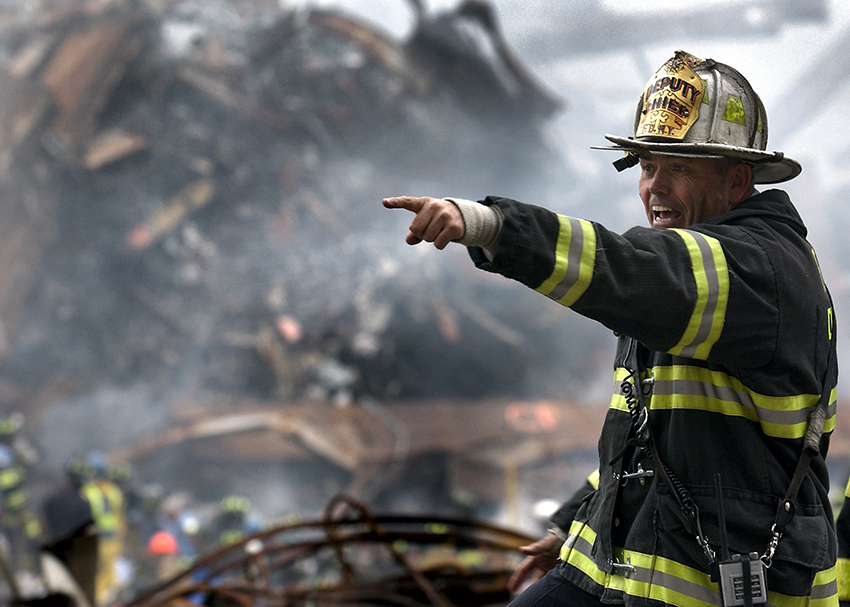- Digital Marketing
- PR & Content
Good crisis management PR means being ready with an effective crisis plan.
Crisis management plays a vital part in reducing negative publicity during a crisis. Our Head of Client Services, Simon Kinnear talks about the importance of having an effective crisis plan.

What do you do if your factory is on fire? Or your I.T. system fails? Or you need to make changes in your workplace? Keep calm and carry on.
Remember that? The famous WWII propaganda slogan that gained a new lease of life in the 2000s as the motivational poster/mug/keyring of choice.
It’s an effective message but, while it is sound advice, it’s not always easy to keep calm and carry on. Especially when your business is in the middle of a crisis.
To protect the short- and long-term reputation of your brand, it’s essential to deal with the negatives quickly and effectively. Crisis management is the discipline of doing this, yet often it is considered only as something reactive. That’s an understandable position to take. After all, who knows what might happen?
Coronavirus: highlighting the need for crisis response
In most instances, crisis management plans are often discussed and based on real-world events – in most cases, businesses can build their crisis management to events that are arguably predictable – such as a factory fire or machine breakdown.
However, for businesses who had a crisis strategy in the first place, the impact of the coronavirus pandemic left them questioning whether these plans were the right ones. And for many companies that didn’t have anything, they were left scrambling to pull communications together. Sudden lockdown measures meant that businesses had to quickly change how they operate day-to-day, and review their current marketing strategies and plans to ensure they were still appropriate.
What constitutes a business crisis?
Generally, anything that causes extensive disruption or damage – which can be reputational, operational or financial. It might be caused by outside forces (a natural disaster or act of terrorism) or by something internal, such as negligence or misconduct. Your response will be determined in part by the nature of the crisis.
It’s important to realise that not all crises are equal. Eric Dezenhall, author of The Glass Jaw, distinguishes between sniper crises – small, episodic incidents that are easier to manage – and character crises, which might signal longer-term reputational damage. An example might be a major corporate scandal such as Enron.

What is your crisis policy?
Whatever the specifics, you should know as a company where you stand. It’s easier to stay calm in a crisis if you’re following an agreed policy. If in doubt, follow the most commonly used advice from crisis comms practitioners: tell it all, tell it fast, tell it true.
In short, tell it all means you should disclose all the facts that you know, unless there are good reasons not to, such as commercial confidentiality.
Tell it fast means, quite simply, don’t delay; even if you can’t say everything, say something, so you can take control of the news agenda before others do.
As for tell it true? The very worst thing you can do to your reputation is to get caught in a web of deceit.
Who’s in your crisis team?
A good crisis team is like any other; it’s all in the mix of people. Clearly, there must be someone to run the team, who owns the crisis plan and advises senior management and stakeholders. They need to be supported by deputies and coordinators to make everything run smoothly, plus any other internal and external resources – such as a PR and content marketing agency or social media agency – who can help to make difficult calls and to (yes) keep calm.
Key things to note: always have at least several people designated as being ‘on call,’ because you never know when disaster will strike. Have a good mix of personalities to fuel all of the logical, emotional and creative considerations that may arise. And make sure you have strength in depth – a long-running crisis can drag on, so you need some great talent on the subs’ bench.
Last but certainly not least, you need a spokesperson. This shouldn’t be somebody already on your team, as they’ll have enough to worry about. They should be reasonably senior, although it needn’t be the top dog in your business. What’s crucial is that they can be professional but also warm and human. Training is crucial; don’t leave it to chance that they can handle the pressure of a TV interview.

Where is your crisis control centre?
Decide on a Control Centre – bear in mind the nature of the incident might mean your office isn’t available, for example if there’s a fire. Have a contingency in place, like a local hotel with good facilities, and make sure you have access to all of the phones and laptops you’ll need. Oh, and don’t forget the chargers.
You should also make sure you have a Digital Asset Management (DAM) folder with your brand guidelines, social media strategies and PR strategies that your team can access and action quickly.
Who are your key audiences?
There will be lots of people affected by a crisis. This will vary depending on circumstances, but you can safely assume that at least some of the following will be amongst your key audiences: employees, customers, shareholders, regulators. Identify who is most affected, and focus on them.

What are your key messages?
Again, there’s only so much you can say in advance – but knowing your business inside and out, you’ll have a rough idea of the *type* of crisis you might be susceptible to. It’s worth drawing up a list of likely scenarios, for which you can then draft holding statements that can be quickly fleshed out with specific details. Another ‘must have’ is a list of neutral ‘fast facts’ for journalists. If they’re talking about your business, at least give them access to accurate information.
As for the tone of any message, most PR practitioners follow the same, trusted process: CARE. This is an acronym for Concern/Action/REassurance. Put simply, show concern for what’s happened, explain what action is being taken, and provide reassurance you’re taking it seriously and getting things back under control.
What happens next?
Crisis Response is only the beginning. Once the immediate threat is managed, things move to business recovery. Clearly, having the right crisis plan in place will mitigate the risk early in the process, and should lead you to return to business as usual. You’ve kept calm; now it’s time to carry on.